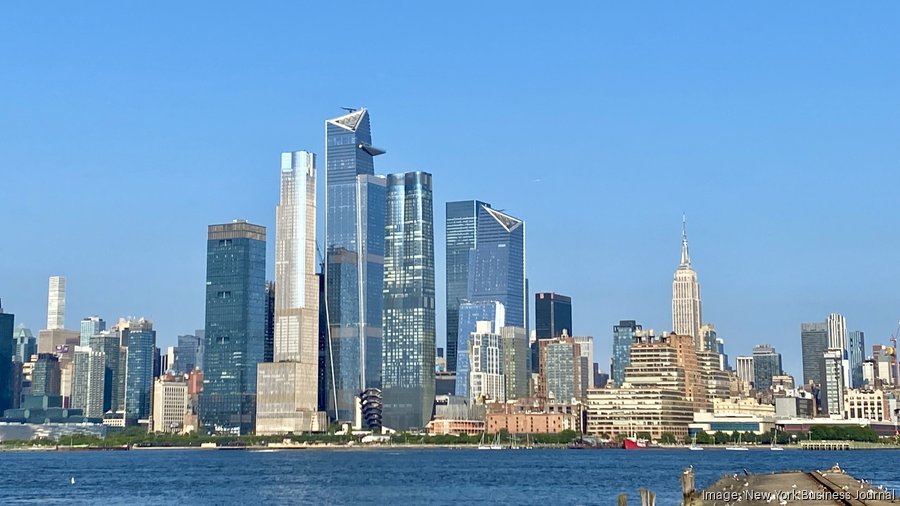Listen to this article 4 min
The most expensive street for office real estate in New York City is 34th Street in Hudson Yards, according to a new report from JLL.
The corridor was second in the brokerage's Most Expensive Streets Report 2024, which ranked the top 50 most expensive streets in the U.S. office market.
Topping the list was Sand Hill Road in Menlo Park, California, where average gross asking rents for full-service offices have reached $167.74 per square foot.
JLL found that asking rents were second-highest along 34th Street in New York's Hudson Yards submarket, where they were recorded at $162.43 per square foot.
"Marking the largest private development in the history of North America, Hudson Yards is shifting New York’s center of gravity toward mixed-use spaces, creating a city-within-a-city where consumers can live, work and play," JLL said in a statement.
NYC's most expensive streets for office real estate
- 34th Street (Hudson Yards)
- Fifth Avenue (Midtown Core)
- Hudson Boulevard (Hudson Yards)
- 10th Avenue (Hudson Yards)
- Madison Avenue (Central Park)
- 53rd Street (Midtown Core)
- Park Avenue (Midtown Core)
- 52nd Street (Midtown Core)
- Seventh Avenue (Penn District)
- 57th Street (Central Park)
Other expensive streets across the country were Royal Palm Way in Palm Beach, Florida; University Avenue in Palo Alto, California; and Greenwich Avenue in Greenwich, Connecticut.
Of the more than 50 markets analyzed by JLL, rents on the most expensive streets exceeded the market average by 75%, the brokerage said in a statement.
"Prime office corridors have been relatively immune to recent challenges in the commercial real estate market," JLL said.
JLL's stats show that 10% of "inferior" assets account for 60% of the national vacancy. Across the country, U.S. office vacancy is measured at 21.6%. Vacancy on New York's 34th Street is 15%.
JLL also said that prime office corridors have seen positive absorption over the past year, while the rest of the market registered 50 million square feet of negative net absorption.
“U.S. office assets in prime corridors have shown resiliency over the past four years as companies recognize the value in high-quality offices, not just as a means to motivate return-to-office strategies, but also as a recruitment and retention tool,” Jeff Eckert, president of Americas agency leasing at JLL, said in a statement. “The best buildings in the best locations will continue to shine.”
JLL found that leasing activity in mixed-use environments increased due to post-pandemic transformations in cities and changing habits of consumers.
"Activity levels in those areas with a more diverse distribution of property types among commercial, residential and entertainment uses have recovered more quickly than commercially dominated cores," JLL said.
JLL also noticed a shift to office submarkets outside of central business districts.
“It’s not surprising to see emerging submarkets become more dominant," said Jacob Rowden, research manager for U.S. office at JLL. “These neighborhoods outside the CBD tend to be in the middle of the action and offer tenants everything they’re looking for — from dining and shopping to entertainment amenities and fitness centers.”


